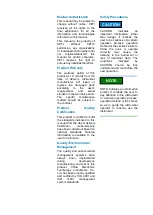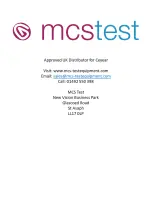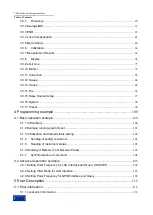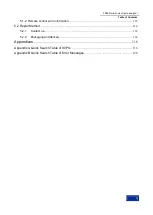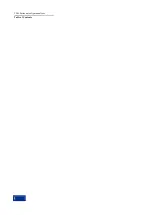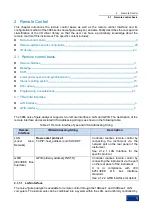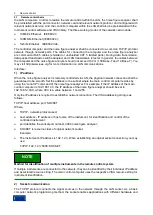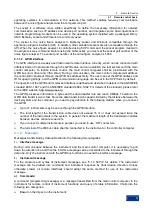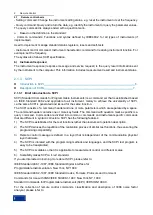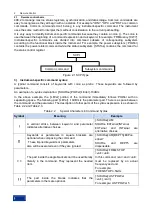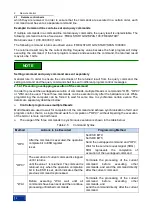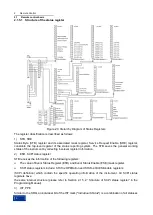
2
Remote Control
2.1 Remote control basis
3
2 Remote Control
This chapter introduces the remote control basis as well as the remote control interface and its
configuration method of the 3986 series noise figure analyzer, and also briefly describes the concept and
classification of the I/O driver library, so that the user can have a preliminary knowledge about the
remote control of this instrument. The specific content includes:
Remote control basis
…………………………………………………………………………………………3
Remote interface and its configuration
I/O library
……………………………………………………………………………………………………23
2.1 Remote control basis
Remote interface
……………………………………………………………………………………………3
Message
………………………………………………………………………………………………………5
SCPI
……………………………………………………………………………………………………………6
Command sequence and synchronization
Status reporting system
……………………………………………………………………………………15
Error queue............................................................................
Programming Considerations
……………………………………………………………………………21
2.1.1 Remote interface
LAN interface
…………………………………………………………………………………………………3
GPIB interface
………………………………………………………………………………………………5
The 3986 noise figure analyzer supports two remote interfaces: LAN and GPIB. The description of the
remote interface and associated VISA addressing string is as shown in the following table:
Table 2.1 Remote Interface Type and VISA Addressing String
Remote
Interface
VISA Addressing String
Description
LAN
(Local
Area
Network)
Raw socket protocol:
TCPIP::host_address::port::SOCKET
Controller realizes remote control by
connecting the instrument via the
network port on the rear panel of the
instrument.
See 2.1.2.1 LAN Interface for the
specific protocol
GPIB
(IEC/IEEE Bus
Interface)
GPIB::primary address[::INSTR]
Controller realizes remote control by
connecting the instrument via the port
on the rear panel of the instrument.
It
is
in
compliance
with
IEC
625.1/IEEE
418
bus
interface
standard.
See 2.1.2.2 GPIB Interface for details
2.1.1.1 LAN interface
The noise figure analyzer is available for remote control through the 10Base-T and 100Base-T LAN
computers. The instruments can be combined into a system within the LAN, and uniformly controlled by



